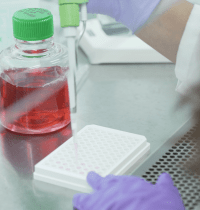 Drug development is a complex process that requires the use of predictive in vitro tools that can generate metabolites that other in vitro models cannot. One such tool is the HUREL® Micro Liver, a type of liver model that uses self-assembling co-cultures of primary cryopreserved hepatocytes combined with a non-parenchymal cell line. HUREL Micro Livers produce the longest-enduring, most phenotypically stable, and metabolically competent liver tissue construct developed to date. In this blog post, we will discuss how to optimize the use of HUREL Micro Livers for drug development. We will provide tips for using the liver models effectively, including how to handle and maintain the plates, and how to perform assays for drug screening. We will also explore the different applications of HUREL Micro Livers, including their use for studying drug metabolism and drug-drug interactions.
Drug development is a complex process that requires the use of predictive in vitro tools that can generate metabolites that other in vitro models cannot. One such tool is the HUREL® Micro Liver, a type of liver model that uses self-assembling co-cultures of primary cryopreserved hepatocytes combined with a non-parenchymal cell line. HUREL Micro Livers produce the longest-enduring, most phenotypically stable, and metabolically competent liver tissue construct developed to date. In this blog post, we will discuss how to optimize the use of HUREL Micro Livers for drug development. We will provide tips for using the liver models effectively, including how to handle and maintain the plates, and how to perform assays for drug screening. We will also explore the different applications of HUREL Micro Livers, including their use for studying drug metabolism and drug-drug interactions.
Handling and Maintaining HUREL Micro Liver Plates
Best practices for handling and maintaining HUREL Micro Liver plates include warming the maintenance media to 37°C, carefully removing the hepatic co-culture plates from the shipping container, and not flipping over the plates. The plates should be acclimated in an incubator overnight, and the media should be changed with the maintenance media every two days. The aspiration protocol should be performed using a low vacuum pressure, and aspirator tips should never touch the bottom of the wells. The recommended incubation volume varies depending on the plate format and hepatocyte number per well.
Assays for Drug Screening
Different assays that can be performed using HUREL Micro Livers for drug screening include cytotoxicity and hepatotoxicity screening, metabolic clearance, metabolite generation and ID, multi-parameter toxicity, and viral liver disease modeling. The results obtained from HUREL Micro Livers in drug screening are more accurate than those obtained from other liver models. HUREL Micro Livers have superior metabolic competency and phenotypic stability, which distinguishes data generated on the HUREL platform from that of primary hepatocytes cultured in suspension, in monoculture, in micropatterned arrays, and in 3D spheroids.
Applications of HUREL® Micro Livers
HUREL Micro Livers have different applications in drug development, including metabolic clearance prediction, reaction phenotyping assay, and hepatobiliary research services. They have been used in previous drug development studies by the world’s leading pharmaceutical companies and are integral to services at many contract research organizations. The advantages of using HUREL Micro Livers in drug development include their superior metabolic competency and phenotypic stability, while their limitations include their cost and the need for further optimization. The cost-effectiveness of using HUREL Micro Livers in drug development depends on the specific needs of the organization. The future prospects of HUREL Micro Livers in drug development include further optimization for better results and the development of new applications.
HUREL Micro Livers are a valuable tool in drug development, providing predictive in vitro tools that can generate metabolites that other in vitro models cannot. By following best practices for handling and maintaining the plates and performing assays for drug screening, the potential of HUREL Micro Livers can be maximized. The different applications of HUREL Micro Livers, including their use for studying drug metabolism and drug-drug interactions, make them an essential tool for pharmaceutical companies, biochemists, medicinal chemists, pharmacologists, and toxicologists.
